Known for its gigantic physique, the Irish Wolfhound is the tallest breed of dog. In the early days, this sighthound was engaged in the battlefield to drag men off horseback and chariots. They were popularly known to hunt large animals like boar, deer, and wolf.
Okay, they were mightier than Thor. But where do they stand today?
Although having a badass history, today Irish Wolfhounds can be found to be sweet, obedient, generous, and make for extremely loving companions even to children.
But don’t underestimate their generosity for weakness!
Irish Wolfhounds are still powerful as they were a century ago. Only their place from ‘War’ has changed to ‘Home’.
They are still capable to hunt animals with a bite force of 224PSI
Fun fact: Irish wolfhound puppy becomes an adult after 16 months of age and can weigh about 100 lbs.
Table of Contents
Breed Images
Quick facts
Average Weight:105- 155 Pounds
Average Height: 30 to 35 inches
Dog Group: Hound dog
AKC Rank: #76 of 197
At A Glance
Irish wolfhound size is classified in large dog breeds. The height of a male Irish wolfhound is at least 32 inches at withers and for females, the height is 30 inches at a minimum.
Irish wolfhound weight can fall between 120-155 pounds for males, and 105 to 140 pounds for females. Many of the larger males can be 34 to 35 inches tall with 140 to 180 pounds weight; females can go up to 32 to 34 inches in height and 115 to 140 pounds in weight.
Irish Wolfhound lifespan can range from 6 years to 8 years.
The Irish Wolfhound is a mighty big boy who has enormous space requirements. Being almost the size of a human, these good bois need room to stretch out in order to be comfortable. Considering the fact that they take up even more room because they do not walk upright, it would be disastrous to keep them in a tight space apartment. Although, they can live well in large apartments if they get ample space to move around and a good walk with their fellow humans.
Irish Wolfhound is an easy-going, sensitive, loyal dog breed that has a big heart for its human companion. They are gentle with kids and show all the traits of a children-loving dog. They are always willing to shower love for their human and bond a deep connection with them.
Having a gentle and caring personality, Irish Wolfhound usually gets along well with everyone, including other pets. With training and early socialization, they can live along with dogs and indoor cats quite well; but, they can show not-so-friendly behavior toward outdoor animals.
Many of the dog breeds are vocal by nature; while many are silent and yet can show high barking tendencies. There are many factors that affect the barking tendencies of a dog. Irish Wolfhounds are one of the quietest dog breeds. Although they have a fairly loud bark, they certainly use it to let you know if they are unhappy. Their barking tendencies hugely depend on their training, socialization, and personality.
Irish Wolfhound dog breed has a double coat which makes them adaptive to the cold weather. The layer of the coat acts as an insulator during colder climates. On the downside, they are not well tolerant of Hot climates and are prone to overheating due to thick fur. They often seek cold climates and prefer to lie on cold hard floors during summer.
The biggish Irish Wolfhounds are known to be intelligent and fast learners. They crave affection from their hoomans which makes them a great companion. They can learn housetraining easily and can also be Crate trained, but care must be taken while crate training as staying in the create for a long time can hurt their joints. At many times, they can show stubbornness while training, but if you're consistent and use positive reinforcement techniques such as food rewards and praise, they can be well trained!
The big gentle giants- Irish Wolfhounds require at least 40 minutes of daily exercise including walks. Though they are mellow inside the house, they need plenty of exercise and space to stretch out. A home with a fence is a perfect fit for them as they can run there freely.
Irish wolfhound grooming needs are average. Having a rough coat, they shed throughout the year but not excessively. Brushing their coat weekly will help to maintain a healthy coat. The dead hair can be plucked twice a year to avoid making your giant friend look shaggy. Bathing should be done only once or twice a year, and their beard must be washed regularly as it can get dirty when your doggo drinks water and eats food. Teeth brushing is required to be done twice-thrice a week.
Although Irish Wolfhounds shed less as compared to other double coat breeds, they are not hypoallergenic. This indicates that they do carry allergens that can produce an allergic reaction in humans.
Irish wolfhound price can range from 1500 to 2000 USD on average.
Attention! DogIsWorld does not promote buying of dogs. The price column given here is for reader’s convenience. We strongly support the idea of rescuing and adopting dogs.
About
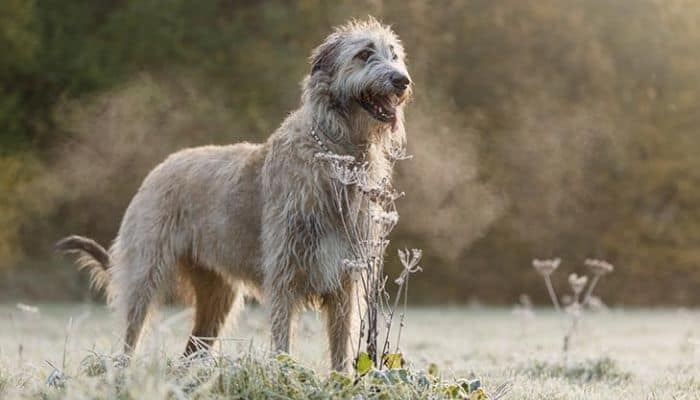
Irish wolfhound is a historic dog breed from Ireland which is classified as Sighthound. They are sweet-tempered, obedient, and family-loving companions.
Centuries ago, they were used for hunting large animals and also served in wars.
Irish wolfhounds express belongingness through their eyes and if you glance at them, it will look as if they are smiling with their eyes!
*Winks*
The Irish wolfhound height is at least 32 inches tall at withers for males and 30 inches for females. They can weigh between 120-155 pounds for males, and 105 to 140 pounds for females.
They have a relatively short lifespan of 6 to 8 years as compared to other dog breeds.
Despite their massive physique, Irish greyhounds are good sprinters (and what’s your excuse to not run?). At the same time, they are obedient creatures, which makes them great household pets. They show caring behavior with children and are very protective of young ones.
These gentle wolfhunters like to take long walks which allow them to stretch their huge body, but most of the time they enjoy being a couch potato at home.
History
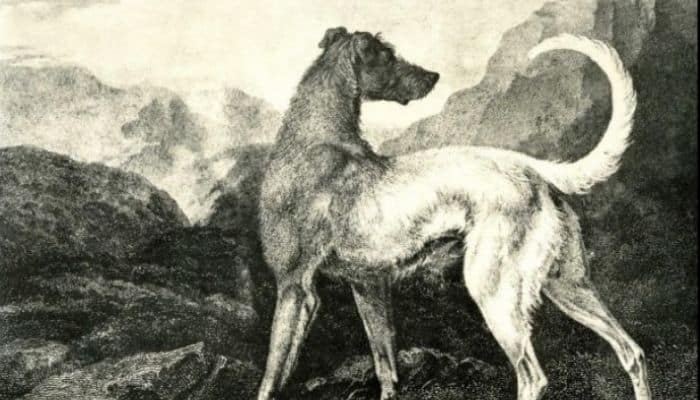
Irish Wolfhound dog is a historic sighthound dog breed from Ireland with its first written record dating back to 391 AD when the breed was mentioned in Roman Council as a gladiator and courser.
Due to their hunting tendencies coupled with obedient personality, they were highly domesticated by humans.
Did you know? Irish Wolfhound was capable of hunting the Irish elk, which stood twice their height.
They were employed as war dogs where their job was to pull men down from horses or chariots. Their duties extended to hunting elk, boar, as well as guarding homes and livestock from predators.
Such an impressive portfolio! (I wish my writing career was as striking as Irish wolfhound’s history. *Cries in corner* )
Being significantly big and brave, Irish Wolfhound inspired literature, poetry, and mythology.
At the end of the 18th century, they faced extinction in Ireland because of the practice of giving them away to visiting nobility. Later the situation escalated due to the extinction of wolves and the 1845 Irish famine.
Today’s Irish wolfhounds are bred from the last surviving wolfhounds crossed with the Great Dane, Scottish deerhound, Tibetan wolfdog, and borzoi.
Facts Theatre
1. Irish Wolfhounds were called ‘Wolf-hunting dogs’ for their abilities to guard against wolves and hunt them.
2. Irish Wolfhound was highly prized for its fighting abilities and battles were fought with their help.
3. Irish wolfhounds were highly lionized by the ancients. A mark of honor was considered by ancient warriors to have their name prefixed with “Cú” which is the Gaelic word for “hound”.
4. The Irish Wolfhound has remained a powerful symbol of Irish identity and has appeared on world-renowned Irish products, old Irish sixpence coins, and specially designed stamps.
5. The Irish Wolfhound has remained a powerful symbol of Irish identity and has appeared on world-renowned Irish products, old Irish sixpence coins, and specially-designed stamps.
6. The Irish Wolfhound has remained a powerful symbol of Irish identity and has appeared on world-renowned Irish products, old Irish sixpence coins, and specially-designed stamps.
7. Although being a great hunting dog, the Irish Wolfhound is not a good guard dog as it shows friendliness toward strangers.
Parenting Guide and Care
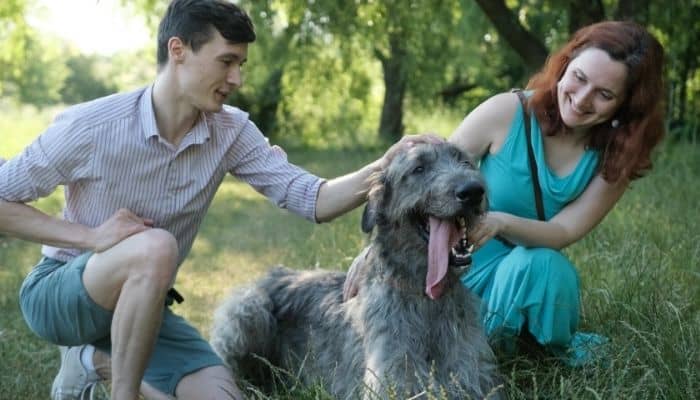
Irish Wolfhounds are not suitable for apartment living.
I repeat. They are not suitable for apartment living.
Although they are mellow most of the time, they need ample space to stretch and play. Also, a house with stairs is a big NO because their joints can wear out by running up and down the stairs. The best take on this is by keeping them in a huge house with a fenced yard where they can play.
Be cautious while letting your giant friend run freely outside as their hunting genes might get activated and they may chase other animals.
Feeding them an hour before meals and two hours after meals should not be done as this can cause bloating.
Irish Wolfhound puppies need about a few minutes of free play in a fenced yard and shouldn’t be taken on walks until they’re at least six months old. After 6 months, they can be taken on 5-minute walks and the distance can be increased to a mile over three months. They shouldn’t be taken on a 2-mile walk until they’re a year old.
-But Why?
Here’s the reason: They are prone to joint problems, and excessive exercise during their growth and development phase can permanently damage their joints.
Irish Wolfhounds are mostly loafer when at home, but they do require a good 40 minutes of exercise and play every day. (I’m too a loafer when at home, but I need at least 40 minutes of video game play every day)
They must always be leashed while taking them on a walk unless you want bloodshed. Being a sighthound, they are inclined to chase running animals if they see them. Regardless of your calls, they will chase their prey with absolute focus, without looking at oncoming traffic. This could be disastrous as they may have an accident. They may also hurt or kill the animal that they are chasing, further causing issues with the victim’s pet’s owner.
Early socialization with pets and training is the key to a well-behaved Wolfhound. Failing this, they may see other pets as prey.
Brushing 2 or 3 times a week is recommended to avoid tartar buildup and gum diseases. Trimming nails twice a month is required if it doesn’t wear down naturally.
Personality & Temperament
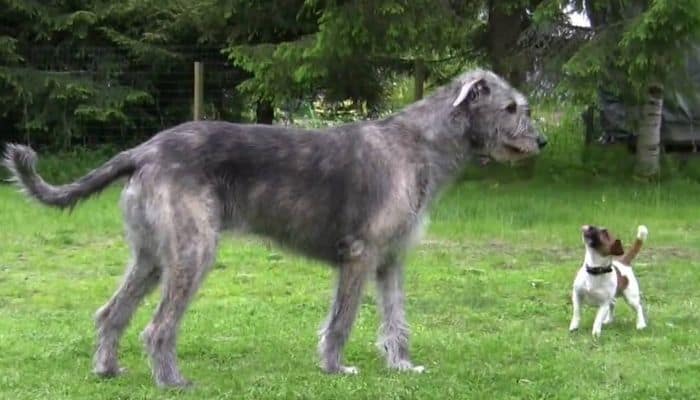
The Irish wolfhound is a gentle, easy-going, sensitive dog breed that has a strong desire for human companionship.
Just under their noble appearance, they have a wolf-hunting nature which can be a cause of concern for the hooman when outside. Due to their nature, they love to chase animals that are running away from them and may be ignorant to hooman’s calls to come back.
Despite being giant and heavy, they are able to run at great speeds. But when inside the house, they tend to be mellow and a lazy king!
Wolfhound is a purrfect family-friendly companion in all aspects. They are calm, responsive, chilled out, and portray affection toward all family members.
Having a giant body, the wolfhound is not aggressive and so does not make up a good guard dog. Reason: they are pacifist, and friendly toward strangers. They are alert during watchdog duties but are not suspicious.
Irish wolfhound temperament, just like other dog breeds, is affected by various factors including its personality, hereditary, training, interaction with the environment, and humans.
The most defining factor of their personality is early socialization with new people, places, and pets.
Irish wolfhound puppies have a good temperament and are curious, playful, and like getting petted by new people.
Colors & Grooming
The Irish Wolfhound double coat is characterized by tough and rough fur with a wiry outer coat covering a soft undercoat.
They have long wiry hair under the eyes and jaw which gives them the noble expression.
Depending upon the quality of breed, they may have a softer and longer coat if the breed quality is high.
They shed all year but to moderate levels. Brushing their coat once or twice a week can be done to maintain a healthy coat. Plucking dead hair is recommended to avoid mating of hair.. Grooming long hair can be done with a pair of scissors or best – by going to a professional dog groomer.
Bathing your giant friend should be done only once or twice a year, unless he gets into something stinky.
Their nails must be trimmed twice a month or as required. Overly long nails should be cut as they can cause pain to your doggy while walking and running.
Brushing Irish Wolfhound’s teeth is needed to be done at least two or three times a week to remove tartar and bacteria buildup. Daily brushing can be done to have better oral hygiene.
The Wolfhound’s ears should be monitored weekly for infection. Common indications are your doggy scratching the ear excessively, and redness or a bad odor from the ear. Cleaning the ear involves the use of a cotton ball dampened with a pH-balanced ear cleaner. Caution: Clean only the outer ear and do not insert anything in the ear canal.
The grooming experience of the wolfhound must be filled with positive experiences from early days as this will lay a good foundation for good boi behavior when he turns into an adult.
They must be constantly monitored for the presence of sores, rashes, or signs of infection such as redness, tenderness, or inflammation on the skin, in the nose, mouth, eyes, and feet.
Feeding
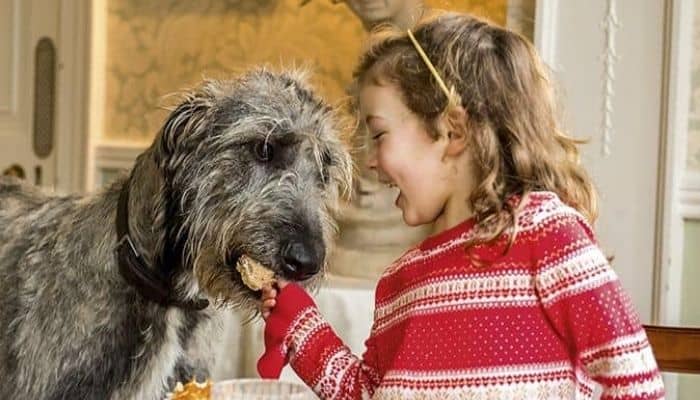
Dogs, just like humans, are different and have different requirements for food. The quantity of food required always depends on the size, age, build, metabolism, and activity level of the dog.
Irish wolfhounds can be fed a variety of food including homemade food but the quality shouldn’t be compromised. Cheap low-quality food is a big NO-NO.
If you don’t know how to make homemade food for your doggy, you might want to check out our Perfect Guide To Homemade Dog Food. It has even got a dog-friendly birthday cake recipe!
The Irish wolfhunter is a couch potato most of the time and will live a slow-paced lifestyle.
Ironic, right?
Their recommended daily amount of food is 4 to 8 cups of high-quality dry food twice a day with a balance of protein, fats, and carbs. Also, it is important to avoid toxic food in their diet.
Puppy: 2 weeks to 16 months
Feeding Irish Wolfhound puppies require a natural diet with a nutrient composition similar to that of an adult formula. Their puppyhood lasts for about 18 months where they grow incredibly fast in their growing age and their dietary requirements must be met with ample high-grade food.
Giving additional supplements including calcium, and cod-liver should be avoided as it can mess up with their liver.
You can take a look at our complete guide to feed puppies
Adult: 16 months to 5 years
Most of the full-grown Irish Wolfhounds live close to a sedentary lifestyle and require a maintenance formula. But if your giant friend is more active, he can be fed a performance formula.
The Association of American Feed Control Officials (AAFCO) suggests that the requirement of the protein for adult dogs is at least 22%, so it’s vital to meet the daily nutrients quota for a healthy life.
Senior: 5 years and above
The metabolism of a dog slows down when he gets older. Around 5 years of age, the Irish wolfhound turns senior and its body starts to wear down. They may become weak and inactive.
At this time, their food quota must be decreased to avoid overweight and heart conditions. Customizing your retired wolfhunter’s diet according to his level of activity would be the best choice.
You can read our guide to Senior dog food to combat issues related to feeding senior wolfhounds.
Health and Vaccination
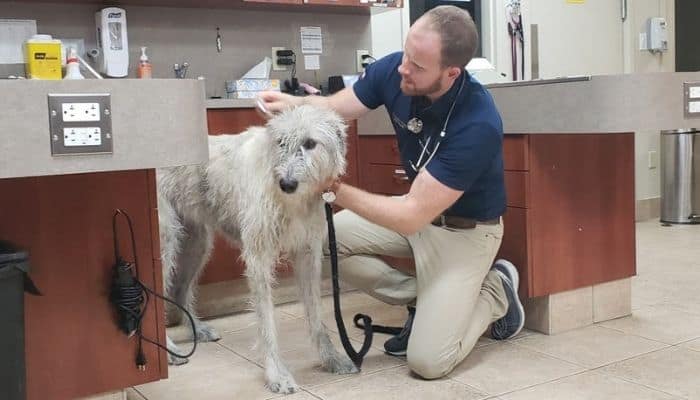
At most, Irish wolfhounds have good health; but like every dog breed, they are in the grasp of certain diseases and health conditions. These health conditions might not manifest in every wolfhound, but it is necessary to be aware of them if you’re considering adopting this breed.
Bloat
Bloat or Gastric Dilatation-Volvulus is a life-threatening disease that can affect Irish wolfhounds. This usually happens when large dog breeds are fed one large meal or when they eat rapidly, drink too much water, or exercise excessively right after a meal. Bloating happens when large amounts of gas, food, or fluid get trapped in the stomach. When the dog is unable to vomit or get rid of excess gas, the blood flow to the heart is impaired. This can cause a sudden drop in blood pressure and the dog may go in shock. If not provided, immediate medical attention, the dog may die. You can read more about Dog bloating here
Signs include your dog being lethargic with increased heart rate, swollen abdomen, excessive drooling.
Hip Dysplasia
It is an inherited condition in which deformities occur in the hip region of the dog during the growth. The hip joint being a “ball and socket joint” doesn’t grow at the same rate, which results in a non-uniform joint.
Some dogs may show sensitivity in either or both hind legs but as a proud owner of the dog, you may not notice any sign. Regular visits to the vet can help detect and treat this condition.
Elbow Dysplasia
This one is similar to Hip Dysplasia and is common in large breed dogs. The three bones of the elbow can grow at different rates which can cause pain and lameness.
Surgery, weight management, or anti-inflammatory medicines can be suggested by a vet to manage this condition.
Dilated cardiomyopathy
Irish Wolfhounds are prone to heart disease, especially dilated cardiomyopathy which can cause heart failure. The heart muscles become thin and are not able to function with ease.
The signs of dilated cardiomyopathy are weakness, loss of appetite, weight loss, depression, difficulty breathing, and an enlarged abdomen. Rest, diet, and medication can help for time being but there is no cure.
Liver Shunt
Liver shunt occurs when there is an abnormal connection of veins between body and liver which can cause the blood to bypass. This can be a serious threat as the liver is a vital organ dealing with absorption, detoxification, and elimination of waste.
Signs: Lack of appetite, low blood sugars, gastrointestinal issues, and stunted growth. Signs can be visible during puppyhood; corrective surgery & a special diet may help.
Fibrocartilaginous Embolic Myelopathy
This can cause complete or partial paralysis of the hind legs. This happens when cartilaginous material blocks the blood vessels of the spinal cord.
No treatment is available but the condition can ease with time in some dogs, while others can face paralysis for a lifetime.
Osteosarcoma
It is an aggressive bone cancer that affects large dog breeds. Signs include lameness, but an X-ray scan is required to confirm it.
Treatment includes amputation and chemotherapy. But don’t worry, Dogs do not get nausea or suffer hair loss due to chemotherapy 🙂
Curious readers can find more information on wolfhound’s health by visiting Irish Wolfhound Club of America
Irish wolfhounds should be vaccinated with canine parvovirus and for canine distemper at 6, 8, 10, 12, and 16 weeks of age and then a booster every three years. The general vaccination program should include DMP, Distemper, Parvovirus, and Rabies.
Make sure to also get a deworming vaccination plan for your giant friend from your vet.
They must be vaccinated to promote health and avoid diseases.
Care must be taken while vaccinating Wolfhounds with live virus vaccine as they tend to have heart diseases which can cause the negative effect of the vaccine.
Also, wolfhounds are sensitive to Anesthesia and similar drugs. Even if administered at a regular dose, it can cause the death of the dog.
Not sure of how to vaccinate your giant friend? You can take a look at our detailed beginner’s guide on Dog Vaccination
An important point to remember: The vaccination should be done under the guidance of a veterinarian, and the vaccination schedule can be altered as per the requirement.
FAQs
Irish wolfhound price falls between 1500 and 2000 USD on average.
No, wolfhounds are not hypoallergenic. Also, they shed less as compared to other double coat dog breeds.
Although they are giants, Irish wolfhounds can run at the speed of 30-40 miles per hour. They are more suited for springing rather than long-distance running.
Picking up the name for your newly acquainted wolfhound can be a tiring task. Here are some suggestions: Artair (like a bear), Bran (raven), Cathal (mighty in battle), Cona (wolf pup), Faolan (wolf), Onchu (mighty dog).
The puppyhood of Wolfhounds lasts till 16 months of age.
They have a double coat and shed constantly all around the year, but the Irish wolfhound shedding is to a minimal degree.
Irish wolfhounds can weigh between 120-155 pounds for males, and 105 to 140 pounds for females.
Hell ya! Irish Wolfhounds make a great family companion! They are an easy-going, sensitive, loyal dog breed that is gentle with kids and shows all the traits of a children-loving dog. They bond a deep connection with their humans and are always willing to shower love.
Dogs similar to Irish wolfhound:
Hey reader,
Thanks for reading this article! We have tried our best to provide you the genuine details on this breed.
If you have any additional information you want to share, do let us know in the comment section. You can also reach out to us on Instagram and Facebook.
Bored of scrolling? You can binge-watch our youtube videos to learn more about Dog culture.
We at DogIsWorld are trying to guide every dog parent with useful content so that they can take care of their pet with utmost care.
Happy Petting To You Guys!



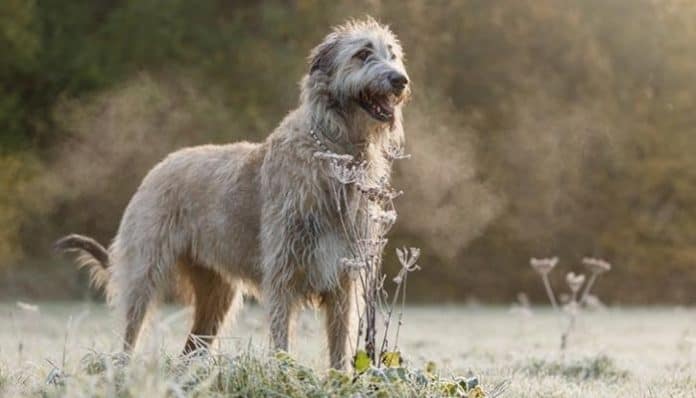

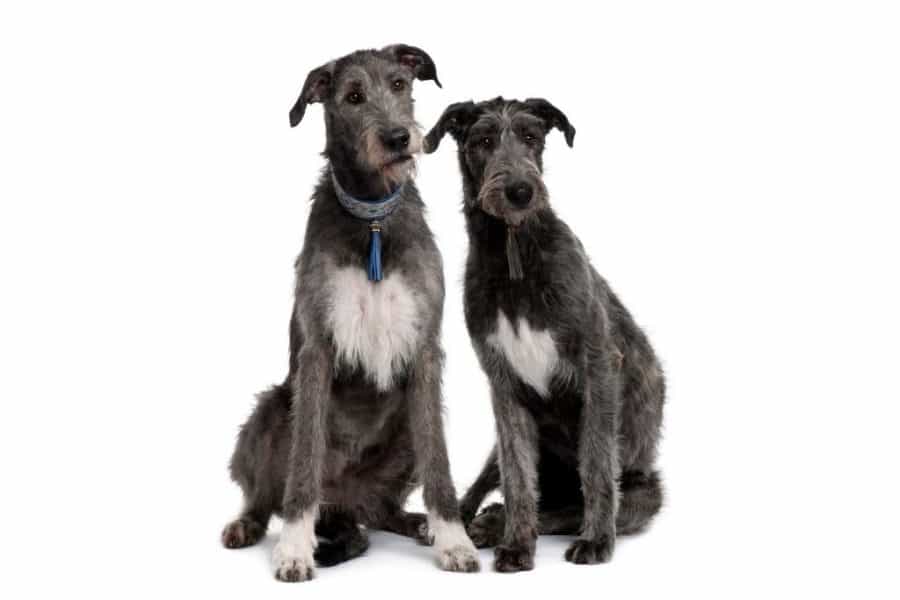

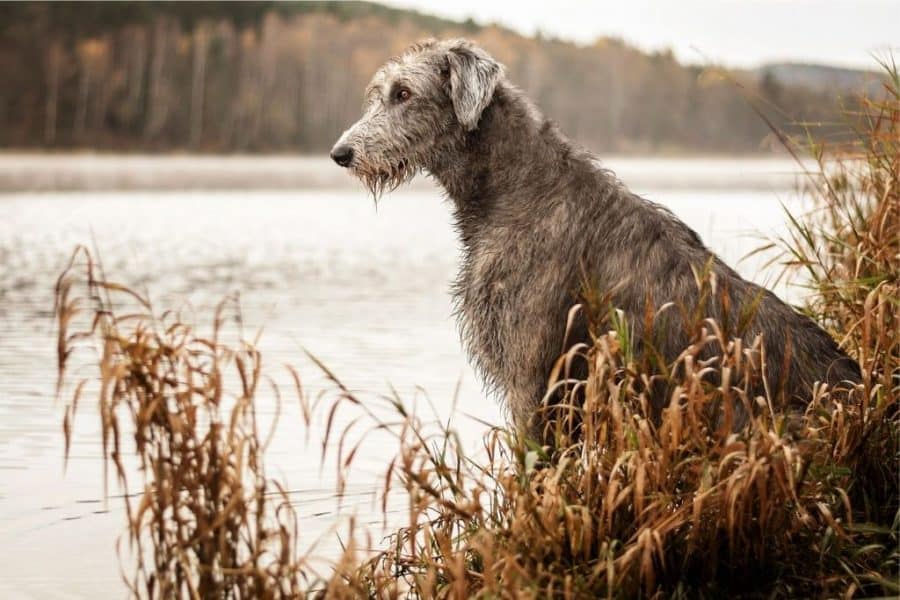
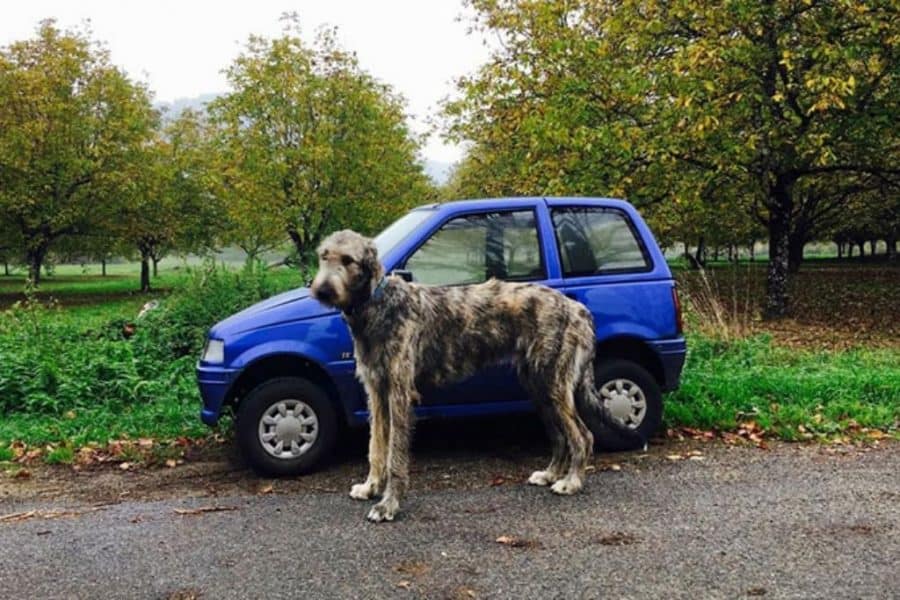
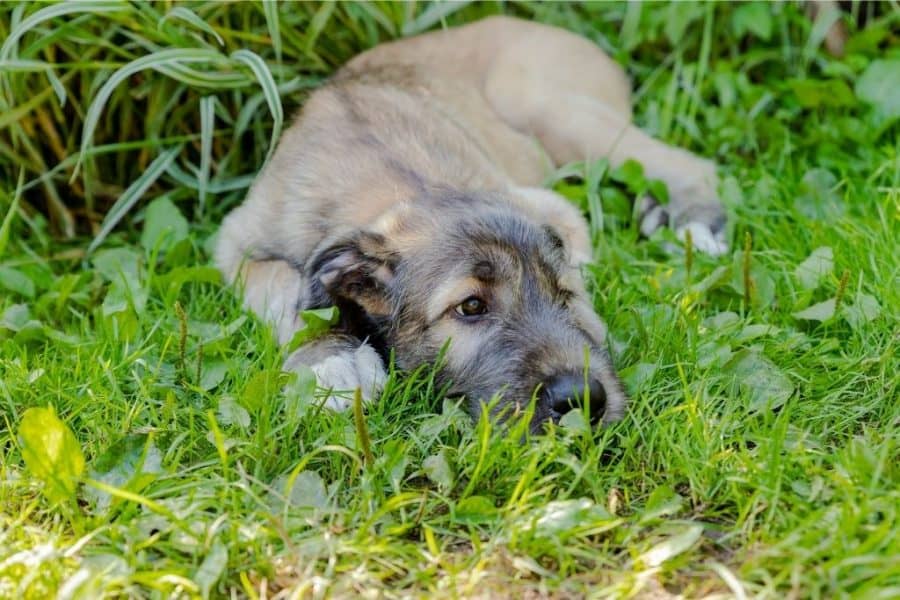
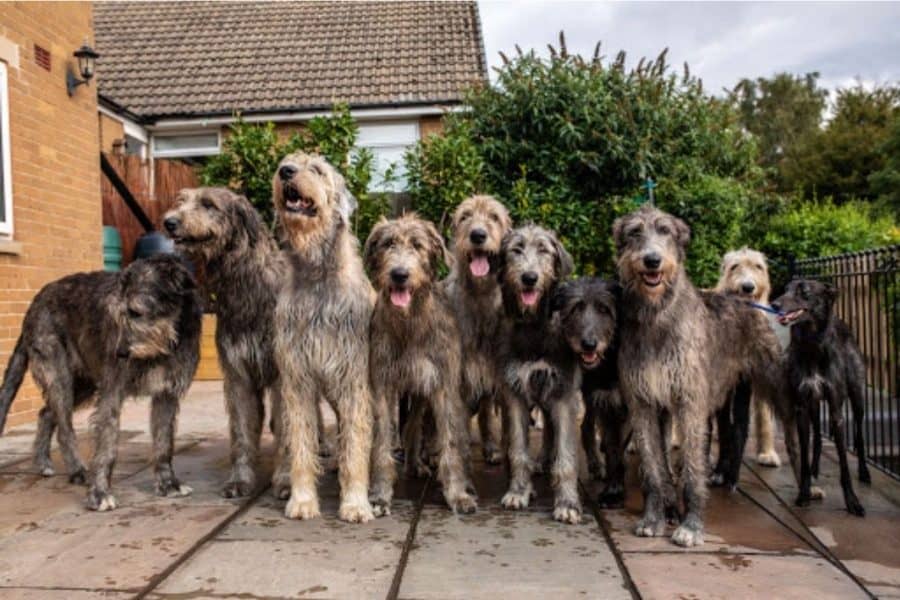
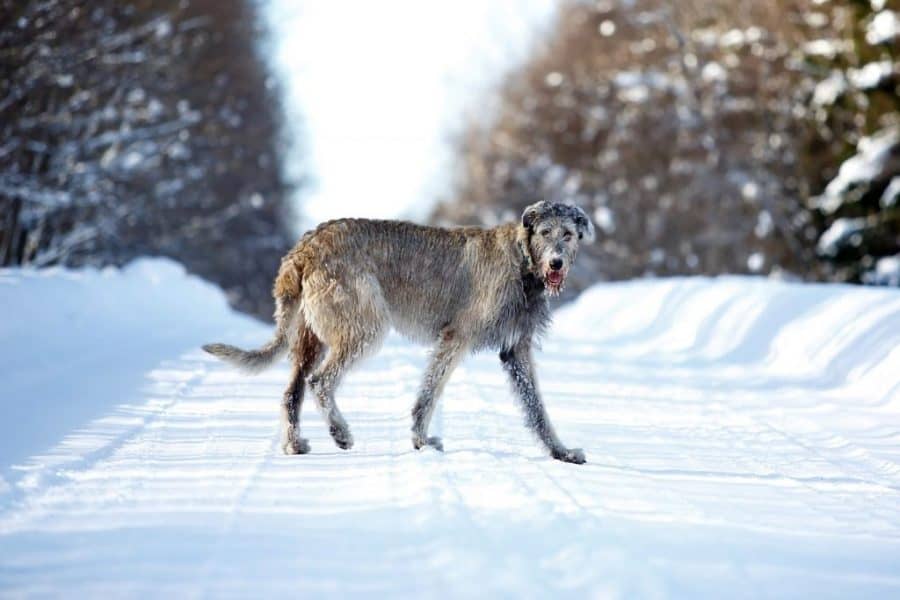
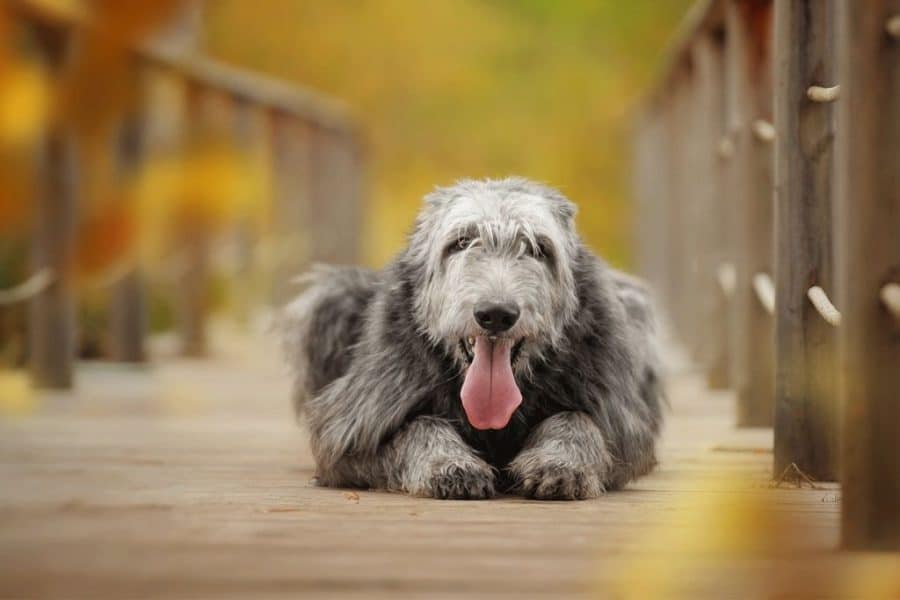
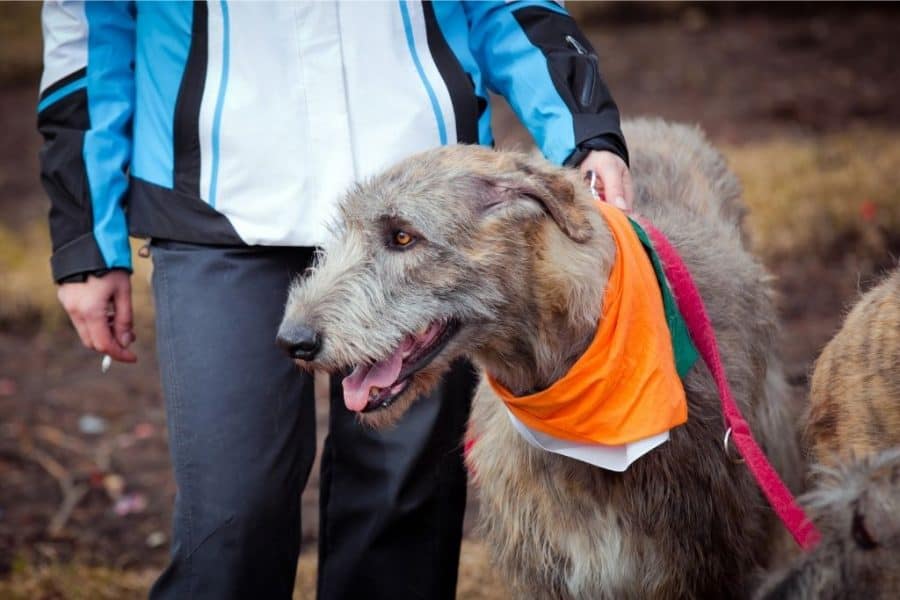
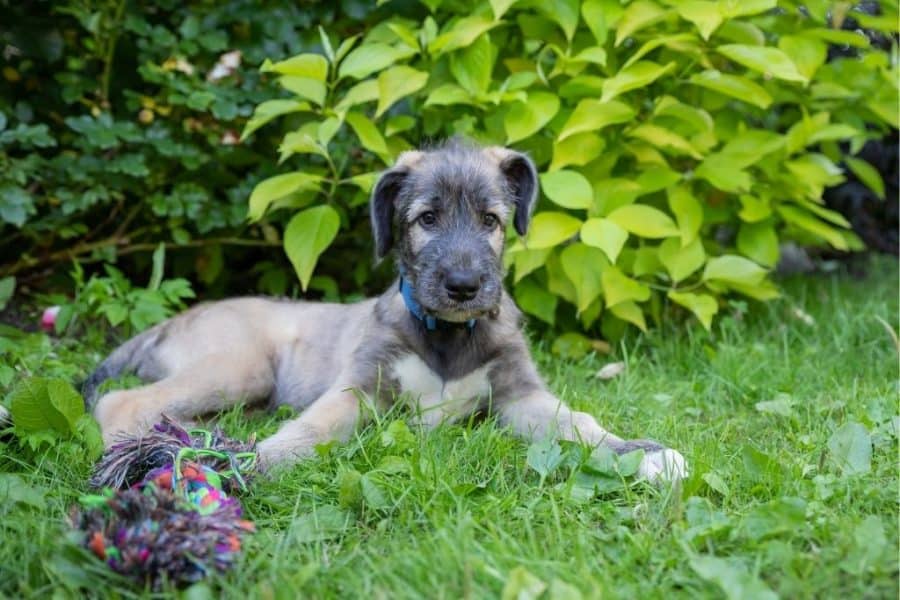

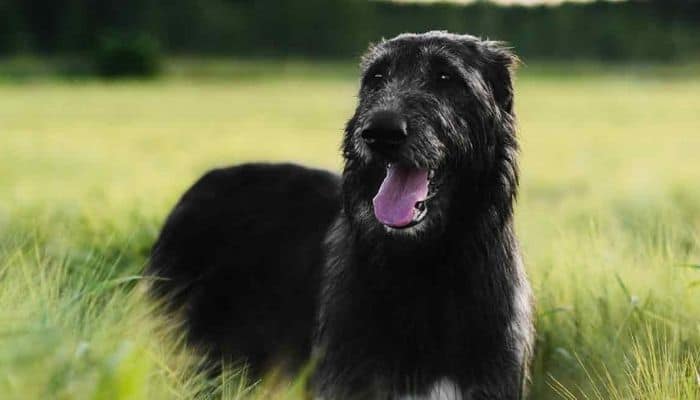
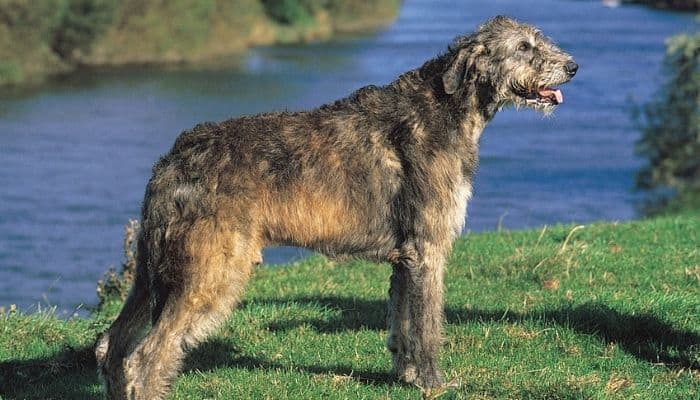
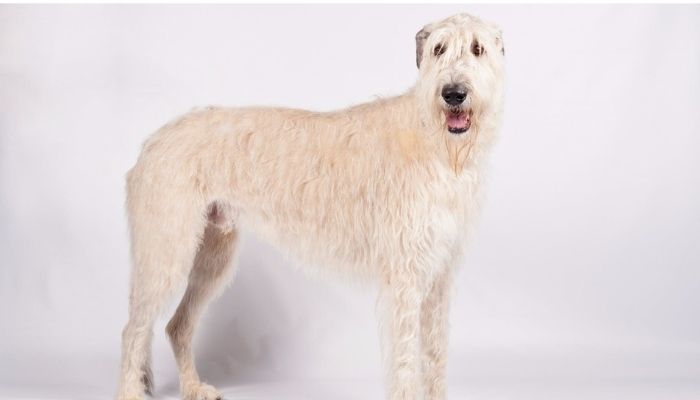









[…] If compared, this mastiff is slightly heavier than his canine equivalent to Saint Bernard. When it comes to body mass and sturdiness the English mastiff also leaves behind the Great Dane and the Irish Wolfhound. […]